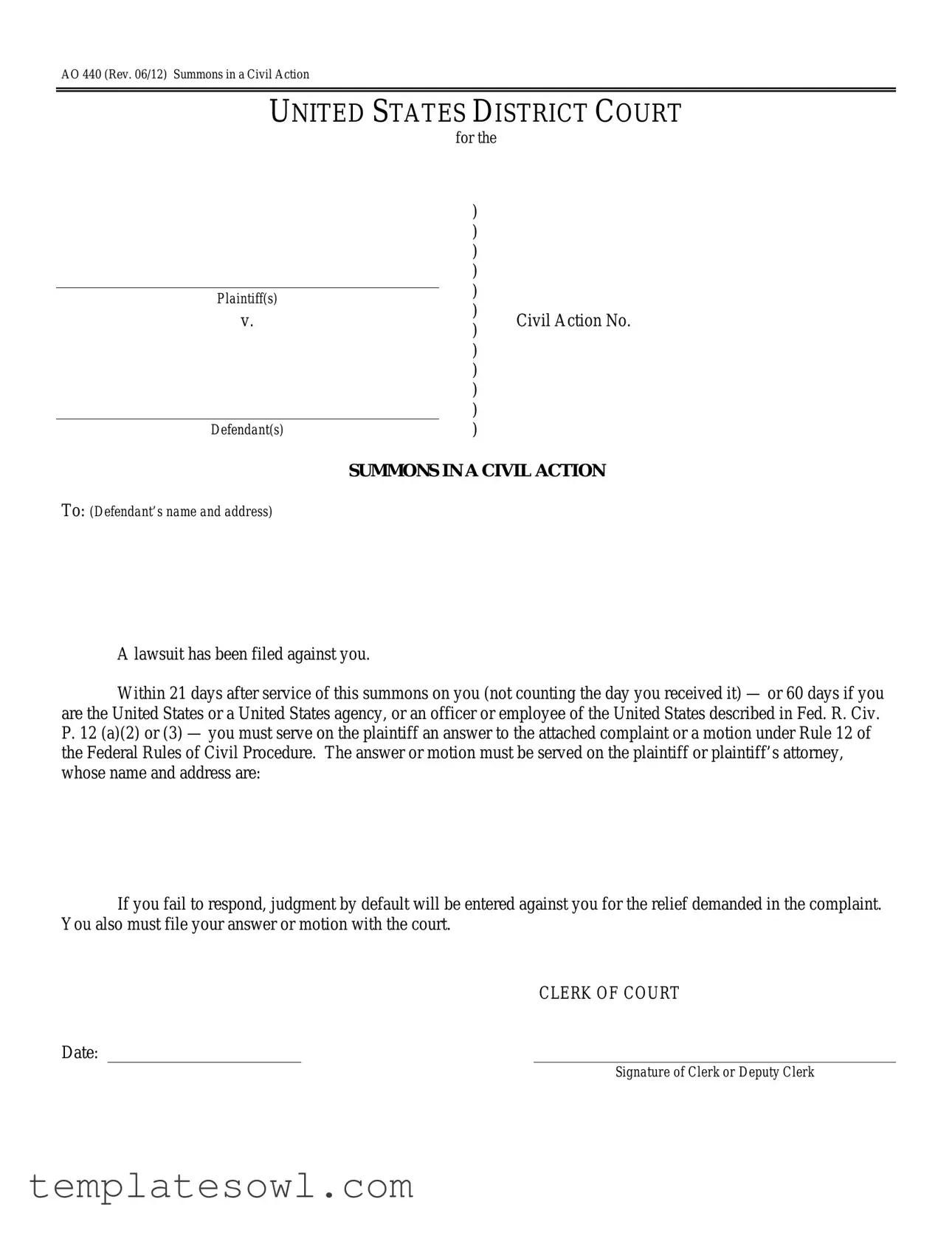What is a Summons in a Civil Action?
A Summons in a Civil Action is a legal document that notifies a defendant that a lawsuit has been filed against them. It officially informs the defendant about the case and outlines their obligations to respond to the complaint. The summons includes critical information such as the names of the parties involved, the court where the case is filed, and instructions on how to respond.
What must I do upon receiving a Summons?
If you receive a Summons, you have a limited time to respond. You must serve your answer or a motion to the plaintiff within 21 days after you get the summons, or 60 days if you are a government entity or employee. It is important to follow these timelines to avoid facing a default judgment against you for the claims in the lawsuit.
How do I respond to a Summons?
You can respond by either serving an answer to the attached complaint or filing a motion under Rule 12 of the Federal Rules of Civil Procedure. Your response should be sent to the plaintiff or their attorney. It is also essential to file your answer or motion with the court where the case is filed.
What happens if I do not respond to the Summons?
If you fail to respond within the specified time frame, the plaintiff may obtain a default judgment against you. This means the court can grant the plaintiff the relief they requested in the complaint without your input or defense.
Who serves the Summons?
The Summons can be served by a process server, a sheriffs’ department, or any individual who is of legal age and not a party to the case. The person serving the summons will provide proof of service, which may include specific details about how and when the summons was delivered.
What is the Proof of Service section?
The Proof of Service section records how the summons was delivered to the defendant. This part should not be filed with the court unless required. It includes details like the name of the individual served, the date of service, and the manner in which the summons was served. This documentation helps establish that the defendant received proper notice of the lawsuit.


